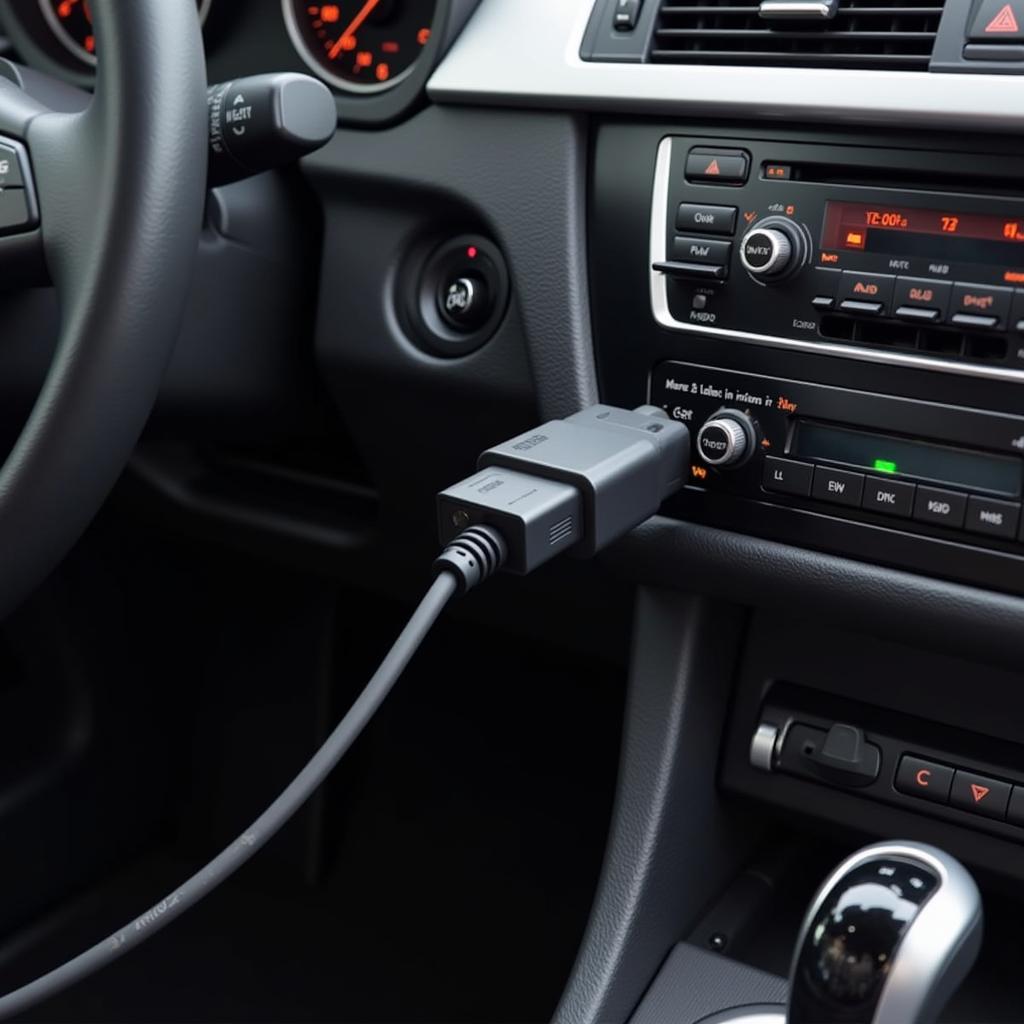Your cart is currently empty!

VCDS Parking Brake Release: A Comprehensive Guide
Releasing a stuck parking brake can be a frustrating experience. Using VCDS (Vag-Com Diagnostic System) offers a reliable solution for diagnosing and resolving parking brake issues, particularly in Volkswagen, Audi, Seat, and Skoda vehicles. This guide explores the intricacies of using VCDS for a “vcds parking brake release”, providing step-by-step instructions and expert insights for both DIY enthusiasts and professional mechanics.
After encountering a stubborn parking brake, many car owners turn to online forums seeking a “vcds parking brake release” solution. Understanding how to utilize VCDS effectively can save time and money. what is vcds lite provides further information on this valuable diagnostic tool.
Understanding the VCDS Parking Brake Release Procedure
The parking brake, also known as the emergency brake or handbrake, is a critical safety feature. When it malfunctions, it can be more than just an inconvenience. Using VCDS to release the parking brake involves accessing the car’s electronic control unit (ECU) and issuing specific commands to retract the brake calipers. This process requires careful execution to avoid potential damage.
Why Choose VCDS for Parking Brake Release?
VCDS provides a direct interface with the vehicle’s ECU, allowing for precise control over various systems, including the parking brake. Unlike generic OBD-II scanners, VCDS offers detailed diagnostic capabilities and access to module-specific functions. This makes it a powerful tool for identifying the root cause of parking brake issues and implementing effective solutions. It can also help to avoid unnecessary and potentially costly repairs.
 VCDS Interface Connected to Car’s OBD-II Port
VCDS Interface Connected to Car’s OBD-II Port
Step-by-Step Guide to VCDS Parking Brake Release
Before starting, ensure you have a genuine VCDS cable and software installed on your laptop. Using counterfeit cables can lead to communication errors and potential damage to the vehicle’s electronics.
-
Connect VCDS: Connect the VCDS interface to the vehicle’s OBD-II port and turn the ignition on.
-
Select Control Module: Launch the VCDS software and select the appropriate control module for your vehicle (usually “Parking Brake” or a similar designation).
-
Access Basic Settings: Navigate to the “Basic Settings” function within the selected module.
-
Execute Release Procedure: Follow the on-screen prompts to initiate the parking brake release procedure. This typically involves entering a specific code or selecting a designated option.
-
Monitor and Verify: Observe the parking brake mechanism for movement and verify that the brake is fully released.
-
Clear Fault Codes (if any): After successful release, check for any fault codes stored in the ECU related to the parking brake and clear them if necessary.
vcds open parking brake provides a visual guide to help with this procedure.
Troubleshooting Common VCDS Parking Brake Release Issues
Sometimes, the release procedure might not work on the first attempt. Here are a few common issues and their solutions:
- Communication Errors: Ensure the VCDS cable is properly connected and the software is up-to-date.
- Incorrect Coding: Double-check that the correct code or option has been selected for your specific vehicle model.
- Mechanical Issues: If the parking brake mechanism is physically seized, VCDS will not be able to release it. In this case, mechanical repairs are necessary.
 Troubleshooting VCDS Connection Issues
Troubleshooting VCDS Connection Issues
“Ensuring you have a genuine VCDS cable is crucial for avoiding communication errors and potential damage,” advises John Miller, a seasoned automotive diagnostician. “Counterfeit cables often lead to unreliable readings and can even brick your car’s control modules.”
Beyond the Release: VCDS for Comprehensive Parking Brake Diagnostics
VCDS is not just for releasing a stuck parking brake. It can also be used for comprehensive diagnostics of the entire parking brake system. This allows you to identify the root cause of recurring issues and prevent future problems.
vcds mobile to release parking break provides insights on mobile solutions for releasing the parking brake.
Preventing Future Parking Brake Problems
Regular maintenance and inspection of the parking brake system are essential for preventing future issues. This includes checking the brake cables, calipers, and electronic components for wear and tear.
 Inspecting Parking Brake Components
Inspecting Parking Brake Components
“Preventive maintenance is key to avoiding parking brake problems,” emphasizes Sarah Thompson, a certified automotive technician. “Regular inspections can identify potential issues before they become major headaches.”
Conclusion
VCDS offers a powerful and effective method for “vcds parking brake release” and comprehensive diagnostics. By following the step-by-step guide and understanding the troubleshooting tips, you can confidently address parking brake issues and ensure the safety and reliability of your vehicle. Don’t hesitate to contact us at VCDSTool for support at +1 (641) 206-8880 and our email address: vcdstool@gmail.com or visit our office at 6719 W 70th Ave, Arvada, CO 80003, USA. We are here to help!
vcds original pret provides additional information on genuine VCDS products and their benefits.
vcds service regeneration of particulate filter provides information on another useful VCDS function.
by
Tags:
Comments
One response to “VCDS Parking Brake Release: A Comprehensive Guide”
[…] The electronic parking brake, a modern alternative to the traditional handbrake, is controlled electronically. This allows for features like automatic hill-hold assist and easier parking brake operation. VCDS (Vag-Com Diagnostic System) is a powerful diagnostic tool that allows you to interact with your car’s various control modules, including the one responsible for the parking brake. This allows you to diagnose and fix problems, and even perform procedures like releasing the parking brake electronically. See more about vcds parking brake release. […]
Leave a Reply